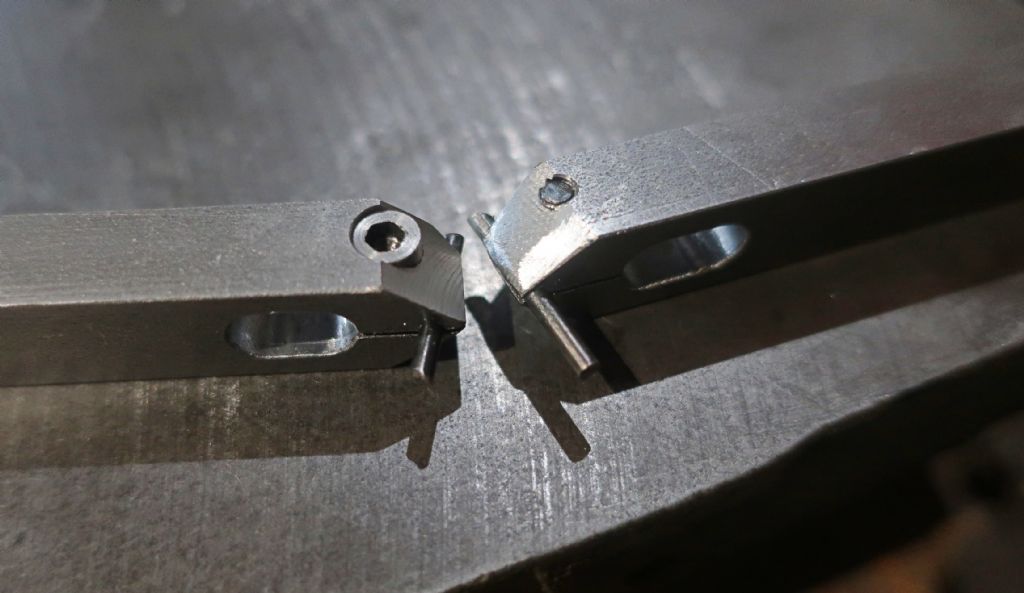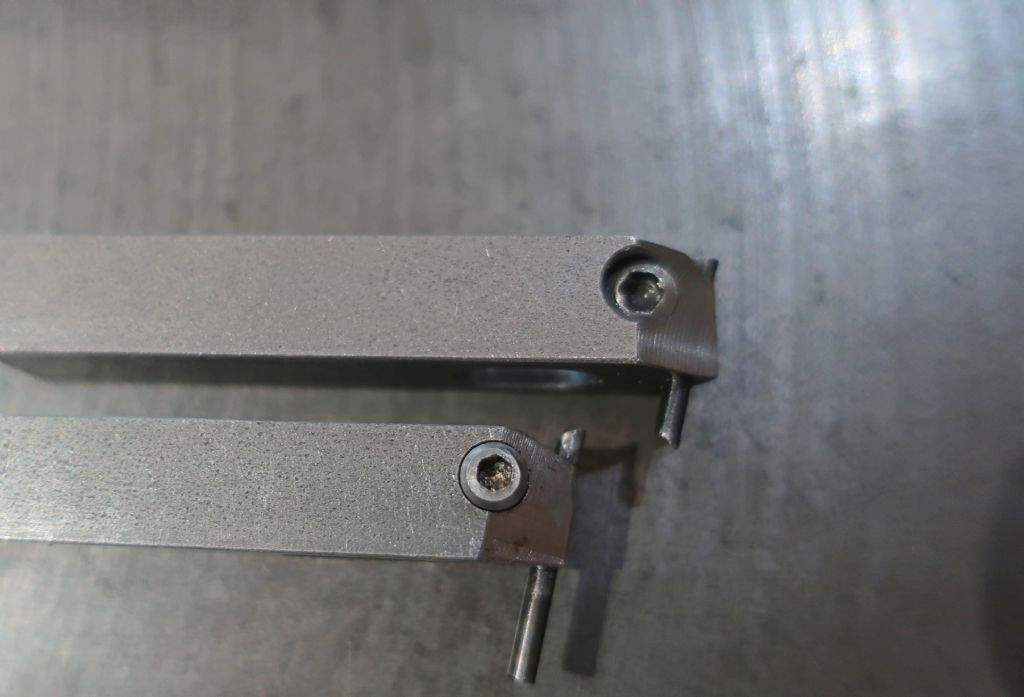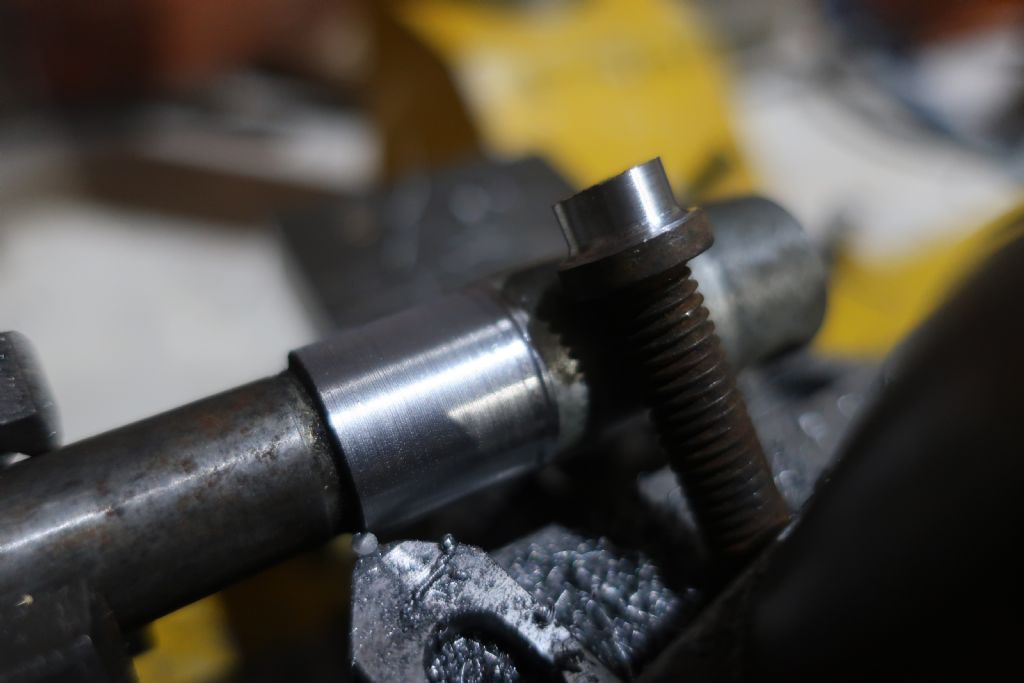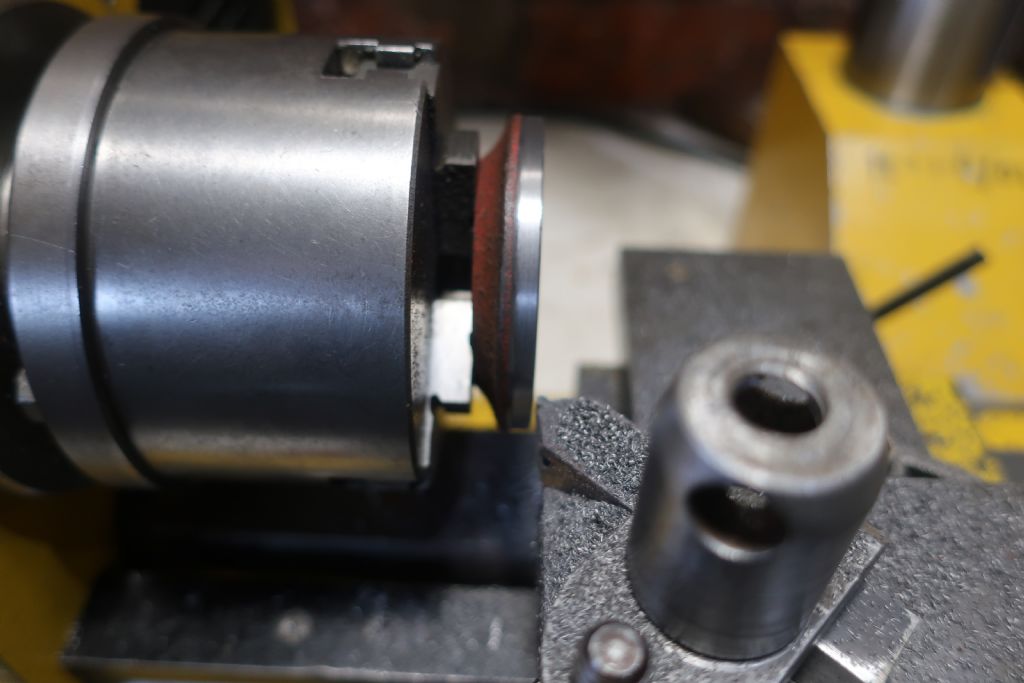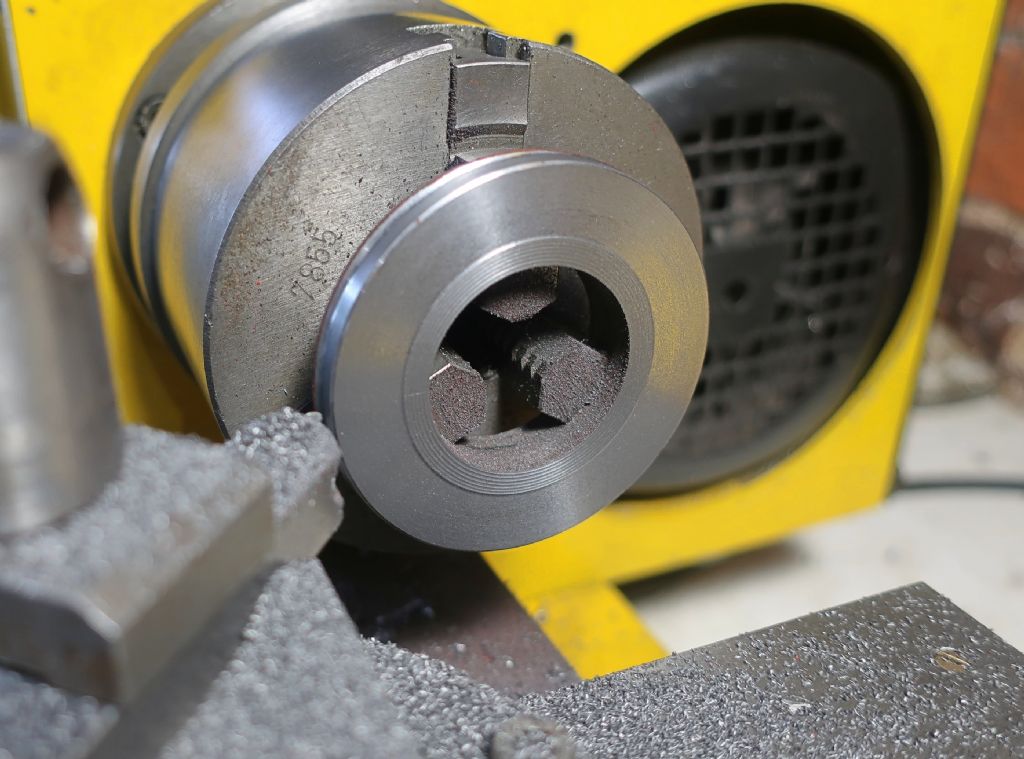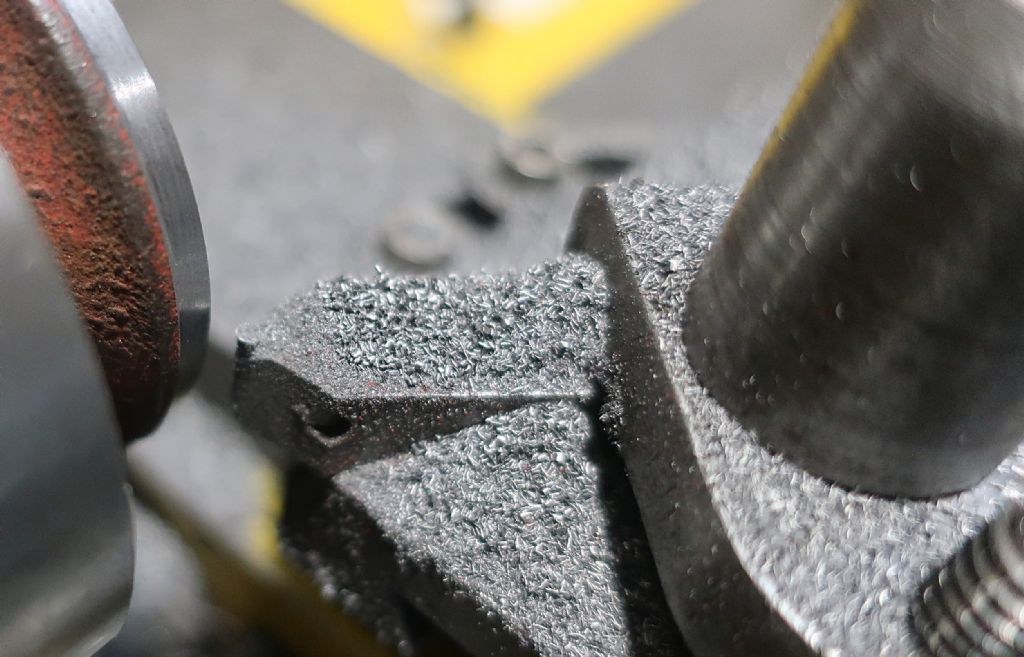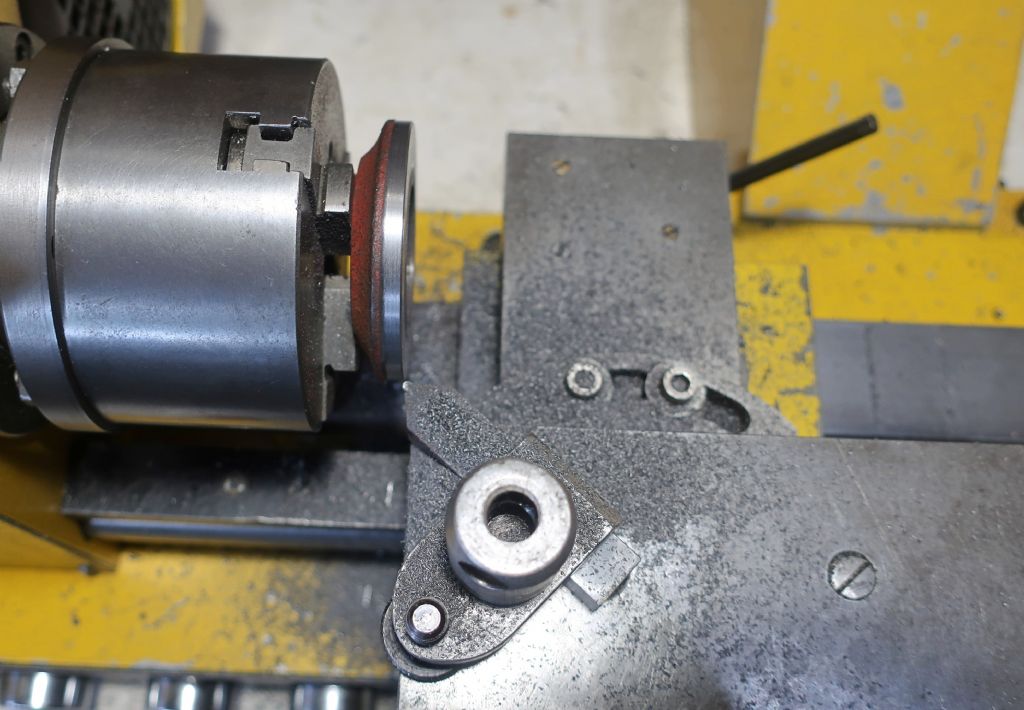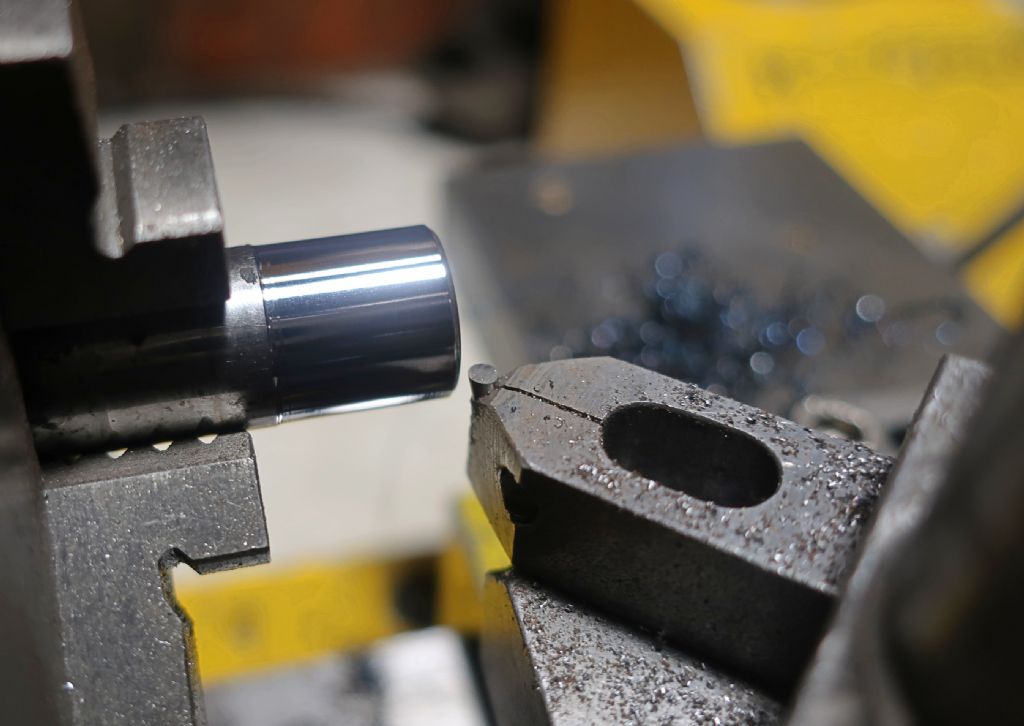Following a week (and more) out of the workshop, I've finished a second toolholder.
Having digested the information provided in Niels' links and following a little correspondence, comment (thank you) and thought, the new version features a small but worthwhile adjustment to the tool angle, improved side clearance, and stronger tool-bit clamping.
I also bought a couple of 2mm round "Tivoly" carbide toolbits.
One of the first revisions was to amend the angle of the toolbit – in the original, I'd been fairly cavalier in the set-up and ended up with an angle of slightly less than the 12 degrees I'd shot for, so with this holder I was careful to err on the generous side to gain myself a little more side clearance.
The upper surface of the tool is machined to centre-height – this makes setting tool height easy, as the holder only needs to be inverted on a flat surface and the tool tip set to touch, whilst the clamp is tightened.
Currently, the tool is ground at the same angle to that in which it is inclined, to give a neutral rake that sits flat on the plate whilst setting – this means that the correct orientation of the tool can be both seen and felt during setting.
The nose of the new holder has an included angle of 80 degrees – reduced from the 85 used on the first tool, it makes acquiring the clearances for facing/turning less critical, and reduces the need to create extra easement by additional hand-filing of the nose.
The "flanks" of the nose were machined with the holder clamped horizontally – on my prototype, I machined them in the same "inclined-at-12-degrees" set-up as drilling for the toolbit, which looked neat & purposeful, but resulted in rather thin jaws, and I think the extra metal in the later version is a positive improvement – It also simplifies the making, as it requires only a simple (rather than a compound) angle to be made. I used a home-made 40 degree angle gauge cut from a piece of 6mm flat bar to align the holder on it's side in the mill vise.
The clamp screw size was upped to M4, the cap head being modified to provide clearance along the flank of the holder.
The tool cuts as one would wish a neutral-rake carbide tool to cut – the photo's below show a tough cap-head screw of unknown (but tough) grade, and a m/c wheel spindle. The results were from the very first off-hand grinding and are certainly acceptable – the spindle had a huge overhang in spite of being shoved up the 'ole as far as I could get it (and was unsupported at the free end because of the shortcomings of the Hobbymat tailstock).
I might make a simple jig to hold the tool for flatting with a lap, just because it's small and slips in the fingers.
I still have a couple of ideas to try regarding the the fixing of the toolbit – although the clamp isn't that onerous to make, it still requires a number of set-ups and operations that it would be nice to reduce, and requires compromises to be made the balance of which are difficult to resolve without making and testing.. a number of options are possible, some tried by others, and some perhaps not..
I'll update once I get a chance to do more with it..
..also belated thanks to John Haine for his link, and Howard, what was that thread project, and was it successful?



DiogenesII.


